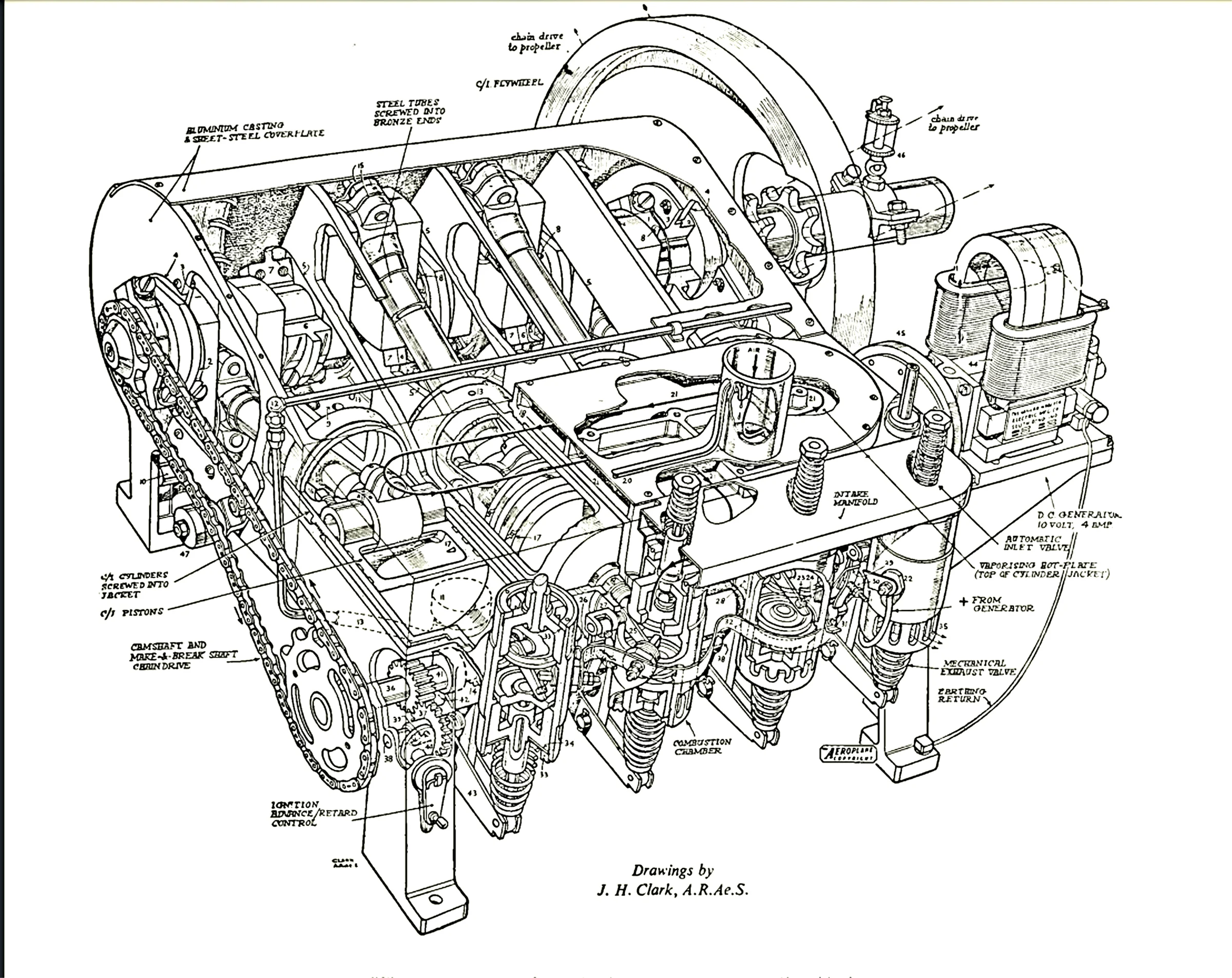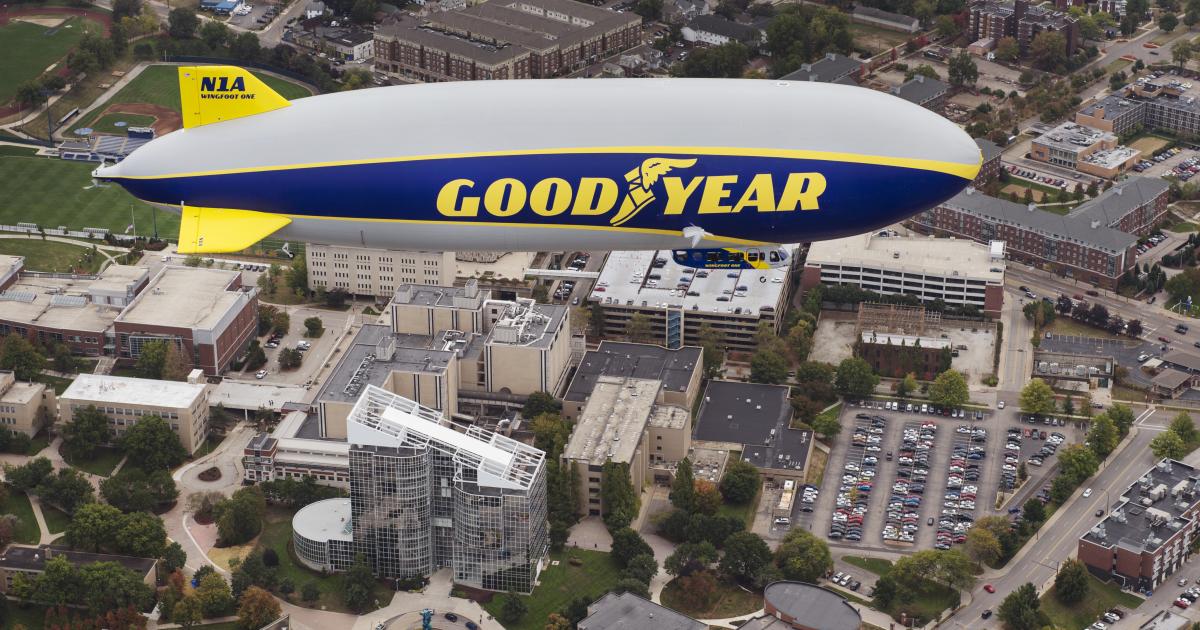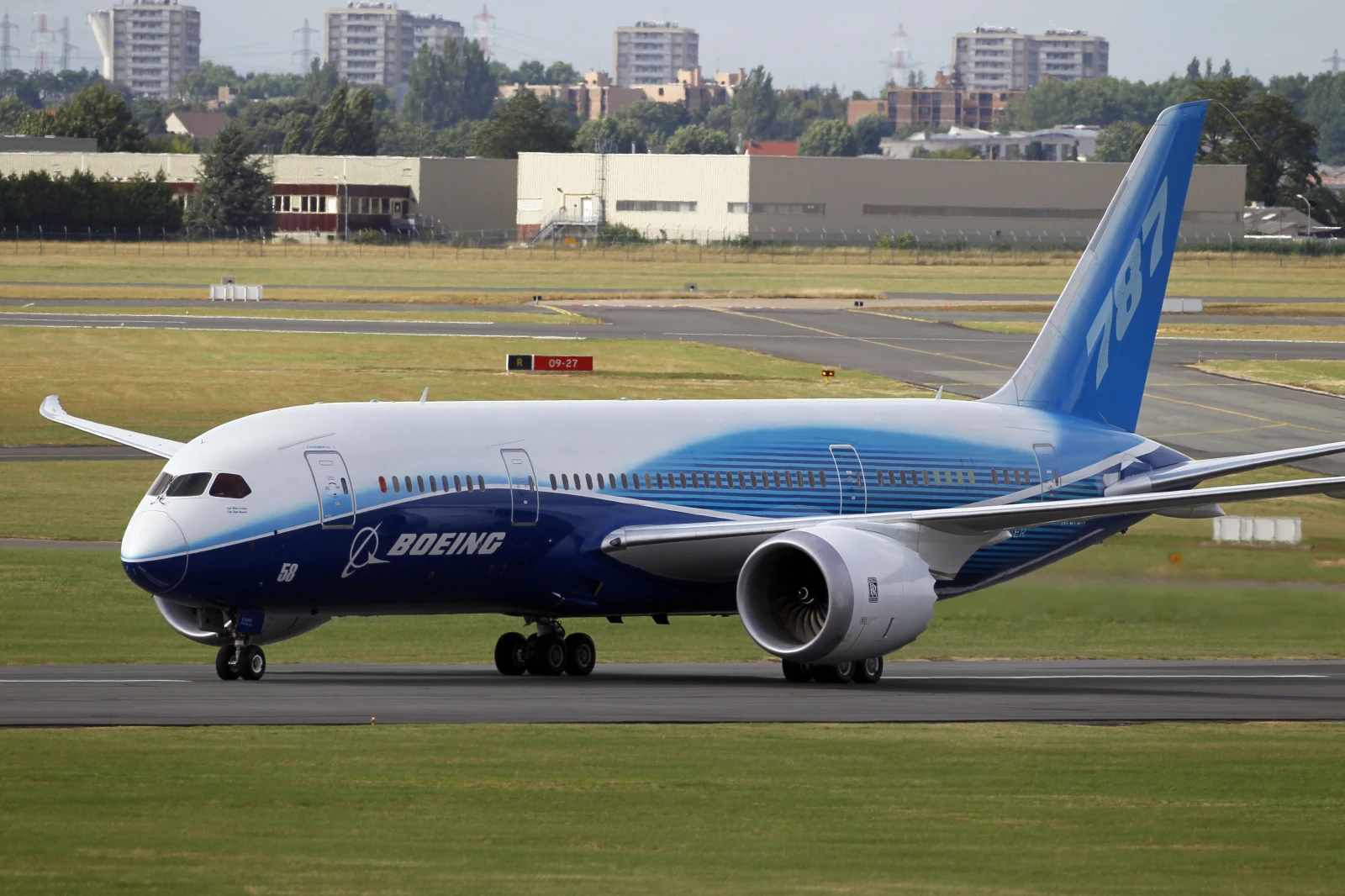
Lots going on in the aviation world.
It's not really our "beat" but the Paris Air Show is going on as we put together this issue. The PAS is all about big iron. airliners, military aircraft, and I didn't realize this, but aviation weapon systems too! It's this last segment that's causing some issues on the Paris exhibit floor. I'll leave it as an exercise to the reader to look into that if you're curious.
In this issue of UCAP Vectors we'll talk about a variety of "our" kind of topics.
How technology is wrestling with providing state of the art systems for pilots... The beginnings of an overview of how aviation fuels have evolved since 1903... Blimps (plural!) at Oshkosh this summer!... The challenges of funding the modernization of our airspace system... A successful off-field landing, and a tragic takeoff crash.
These are some of the things we're watching for possible inclusion in future eps of the podcast.
— Jack
If you like...
... this newsletter, or the podcast, or the video episodes, or any of the Uncontrolled Airspace content, you can stay informed about it, and help support it, by signing up for our Patreon.
Free Patreon members get this newsletter, and notifications about new UCAP content.
Paying Patreon members get the exclusive video episodes, access to other special content, and are helping keep all the UCAP content coming.
Help out by signing up at Patreon today! Become a Free Patreon member for this newsletter and other notifications, or if you're able, become a paying supporter at any tier level.
Thanks!
Flight Tracking: How Hard Can It Be?
For all the code geeks out there (you know who you are), Ben Burwell of FlightAware and their “Angle of Attack” blog has put together quite a list of the falsehoods about aviation that programmers may encounter. It shows how diverse and dynamic the worldwide air traffic control system is when trying to write code.
![]()
Some examples of the falsehoods, under the “Airports” heading, include:
- "Airports always have two unique identifiers: a 4-letter Civil Aviation Organization (ICAO) code and a 3-letter International Air Transport Association (IATA) code
- Airports always have three unique identifiers: an ICAO, an IATA, and a regionally-administered location code
- The U.S. Department of Transportation assigns one canonical code to each airport it oversees."
Some of the falsehoods for “Flights” are:
- "Flights are identified by a flight number consisting of an airline’s code plus some numbers, like UAL1234
- Flights are identified by either an airline flight number like UAL1234, or the aircraft’s registration like N12345, B6459, or FHUVL
- A flight identifier like B6459 is unambiguously either a registration (B–6459), an airline flight number (B6 459), or something else."
Check out the aviation coding falsehoods at FlightAware:
https://flightaware.engineering/falsehoods-programmers-believe-about-aviation/
UCAP videos, exclusively for Patreon Tier One members.
Three times this Spring Jack and Jeb recorded exclusive video podcasts for our Patreon supporters.
The first two were while Jack was in Florida and they sat down in front of Jeb's Debonair. A couple of weeks later, they got on a video call to sort out some of the odd stories lately in the world of General Avitaion.
Don't miss out on any of the exclusive UCAP content. Become a Tier One or higher UCAP Patreon member of Uncontrolled Airspace.

Notes from “The History of AvGas”
I’m working on writing an overview of the history of aviation fuels. Right now I'm working on earliest days of powered (fueled) flight, but I’m not finding a lot of detail of what “gasoline” was like back in the time of the Wright Brothers.
There’s a lot about the engines they built. But not so much about the fuel. Here are a few pieces I’ve found:
Holley carburetor website: “Deep Dive: The 1903 Wright Flyer "A" Engine“
“...creating a combustible fuel mixture was to construct a large tray placed horizontally on top of the four cylinders. The tray allowed gasoline from a small tank that was positioned above the engine to gravity feed fuel to the inlet from an adjustable petcock.”

https://www.holley.com/blog/post/deep_dive_the_1903_wright_flyer_a_engine/
Wikipedia: “History of gasoline”
“During the early period of gasoline engine development, aircraft were forced to use motor vehicle gasoline since aviation gasoline did not yet exist. These early fuels were termed "straight-run" gasolines and were byproducts from the distillation of a single crude oil to produce kerosene…”
“The composition of these early fuels was unknown, and the quality varied greatly. The engine effects produced by abnormal combustion (engine knocking and pre-ignition) due to inferior fuels had not yet been identified, and as a result, there was no rating of gasoline in terms of its resistance to abnormal combustion.”
https://en.wikipedia.org/wiki/History_of_gasoline
If any of you out there know anything about the early days of avgas -- from the Wrights through World War I -- please post in the Patreon comments for this newsletter.
Goodyear to celebrate Blimp's Centennial with two airships at AirVenture.
It's too bad that airships are not a more common part of the aviation world. Seeing one in the sky can be a breathtaking sight. Their size, the low altitudes they operate at, their slower pace, all giving us plenty of opportunity to enjoy them as they float by.
And they can also serve a particular and useful mission. Carrying weights and volumes better than traditional aircraft.
Two Goodyear Blimps at AirVenture! I'm looking forward to seeing a flight-of-two, doing a pass down 18/36, during the fly-in.

Checking In On FAA’s ATC Modernization Program
In the previous issue of Vectors, we told you our Favorite Aviation Agency and its parent DOT had stated, “Given the current conditions of the FAA’s infrastructure, we can no longer wait for funding levels to slowly catch up to the need. We need an immediate infusion of funding to address critical infrastructure needs.” How’s that going?
One June 10-13, 2025, the FAA devoted one of its ongoing “Industry Days” events to ATC modernization. The Industry Days meetings bring together “industry leaders, government agencies, and international aviation experts” to discuss whichever topic is chosen. One outcome was a rash of coverage focused on floppy disc-equipped systems running Windows 95 at the FAA.
Another outcome was a formal FAA request for information from interested parties to help them integrate all the new systems into their modernized ATC system. According to an FAA press release, “The FAA will replace core infrastructure including radar, software, hardware and telecommunications networks to manage modern travel. The agency will equip facilities with better technology to reduce outages, improve efficiency, and reinforce safety.
“The integrator will manage this effort, including acquiring capabilities, and deploying the new technologies. As a first step, the FAA is seeking information about how best to implement this new air traffic system.” This basically is Washington-speak for “Get the usual suspects to send us an invoice and it’ll be their problem, not ours.”
Decisions on the next phase of the FAA/DOT’s ATC modernization effort will be in September, when we’ll see if there are any takers other than, say, SpaceX or LockMart. Meanwhile, whoever wins that contract won’t be hurting: The huge reconciliation bill Congress is considering includes a bump of $12.5 billion on top of the already-budgeted $22 billon for the agency in the coming fiscal year.
Air India 787 in tragic takeoff crash.
In a story that has been breaking as we put together this issue of the newsletter, an Air India Boeing 787 has crashed while attempting a takeoff from India's Ahmedabad.

241 people on board the plane, as well as as many as 30 people on the ground, were killed by the falling plane. Miraculously, it appears that one passenger on the plane not only survived, but was sufficiently uninjured to "walk away" from the crash site.
It's way too early to know what caused this tragedy, but it's shaping up to be an intriguing mystery. We'll talk about it a bit on the next episode of the podcast, and in the weeks and months ahead as we learn more.
https://apnews.com/live/air-india-plane-crash-ai171-ahmedabad-london
If someone forwarded this to you, you can SUBSCRIBE for FREE!
If you received this newsletter, forwarded from a friend, you can become a FREE SUBSCRIBER by becoming an Uncontrolled Airspace Patreon member. This letter will be sent to all free and paying Patreon members.
Off Field Landing of the Week
In a recent ep of the podcast we talked about a video of an off-field landing on a golf course. Here’s that video:

https://youtube.com/shorts/4q2hs9JanKA?si=yL2QR2DEhH9H5f7m
Phew!
A lot in this issue.
We love hearing from you. If you have an opinion on the content of this newsletter leave us a comment in the Patreon post for this issue. Tell us about things you've liked, disliked, or would like us to cover in the future. You don't need a Patreon follower to read or post comments.
Later this week we're recording the next episode of the podcast. Stay tuned.
You can unsubscribe from notifications of this newsletter by visiting your account on Patreon.com and changing your preferences to not receive emails, or by unfollowing Uncontrolled Airspace.
The Uncontrolled Airspace newsletter is
copyright (c) 2025 UncontrolledAirspace.com